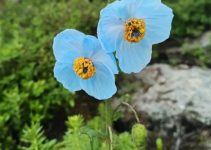Angelica
Angelica is a tall, hardy biennial herb with dramatic stalks that can be candied and used on cakes or cookies. The first year, the plant produces beautiful frilly green foliage. The second year, angelica sends up flower stalks and then produces seeds. The flowers and foliage make a dramatic back-of-the-border accent in perennial beds. The celery-flavor stems may be eaten raw or candied for use in baking. Use the dried root in tea. Plants might self-sow, but plant new angelica each year to ensure a constant supply. Grow it in full sun or dappled shade in rich, organic soil.
Light: Part sun, Sun
Type: Herb, Perennial
Height: 3 to 8 feet
Width: To 3 feet wide
Flower color: Blue, Green, Pink, Purple, White
Seasonal features: Summer Bloom
Problem solvers: Drought tolerant
Special features: Cut flowers, Fragrance
Zones: 5-9
How to Plant Angelica
You should plant Angelica annually to ensure a continued supply of the herb. Angelica plant is considered a short lived perennial or biennial. It flowers after two years and then either dies or may hang on for another year or two.
Growing Angelica indoors is optimum in cooler climates. Set the plants out before they get taller than 4 inches, as they grow a long taproot and transplant is difficult if they get larger. Angelica herb can also be started from division of the roots in spring.
Growing Angelica
The herb prefers cool climates and a semi-shady to sunny location. If planted in a zone with hot summers, a dappled shade location will provide protection for the heat sensitive plant. Angelica herb thrives in moist fertile soils rich in organic matter. For best results, plant Angelica in slightly acidic soil. The plant is not drought tolerant and should not be allowed to dry out.
Angelica herb is easy to care for as long as it is in well drained soil with proper light exposure. Keep weeds away from the plant and soils moderately moist. Water the plant from the base to prevent fungal diseases. Cut the stalk at the end of the first year to promote flowering in the second.
Watch for aphids, leaf miners and spider mites. Control them with blasts of water or insecticidal soap.

